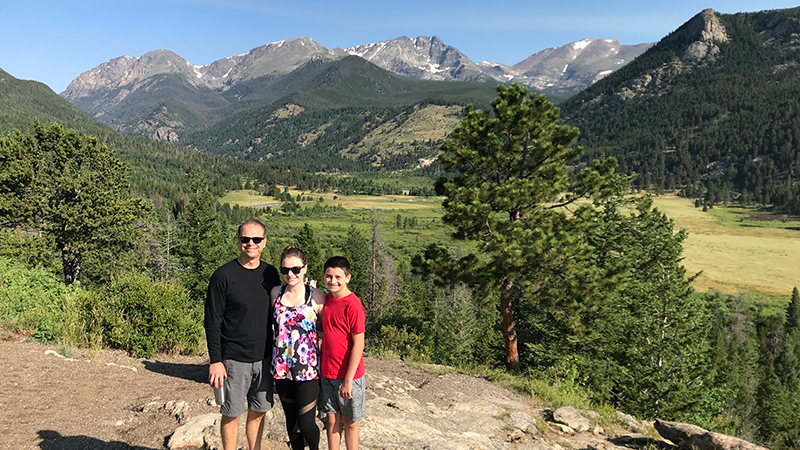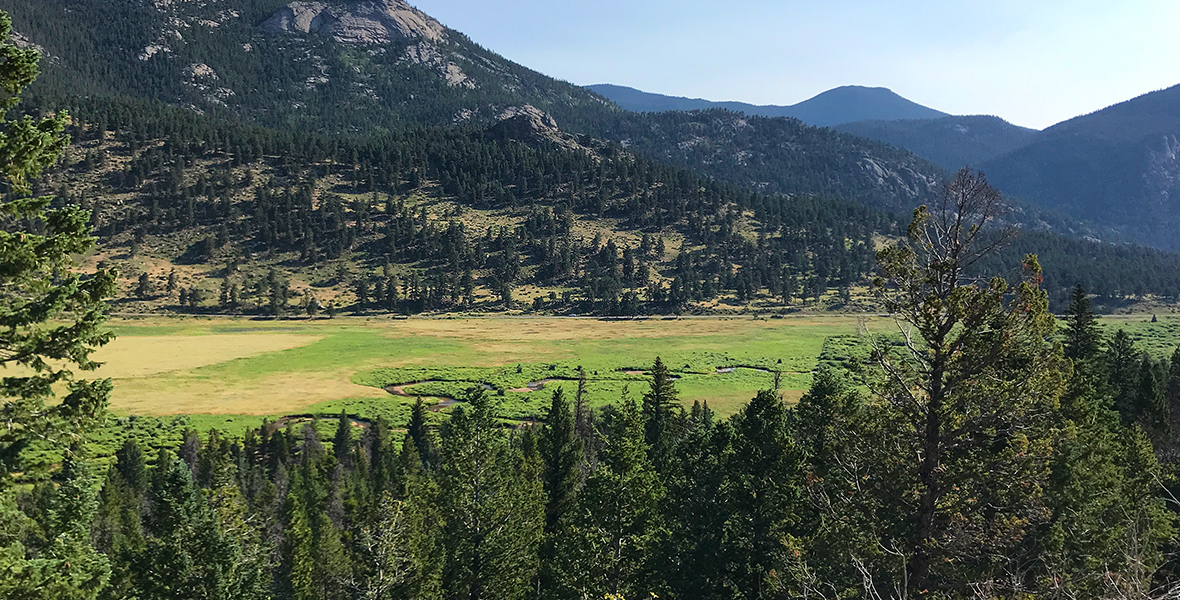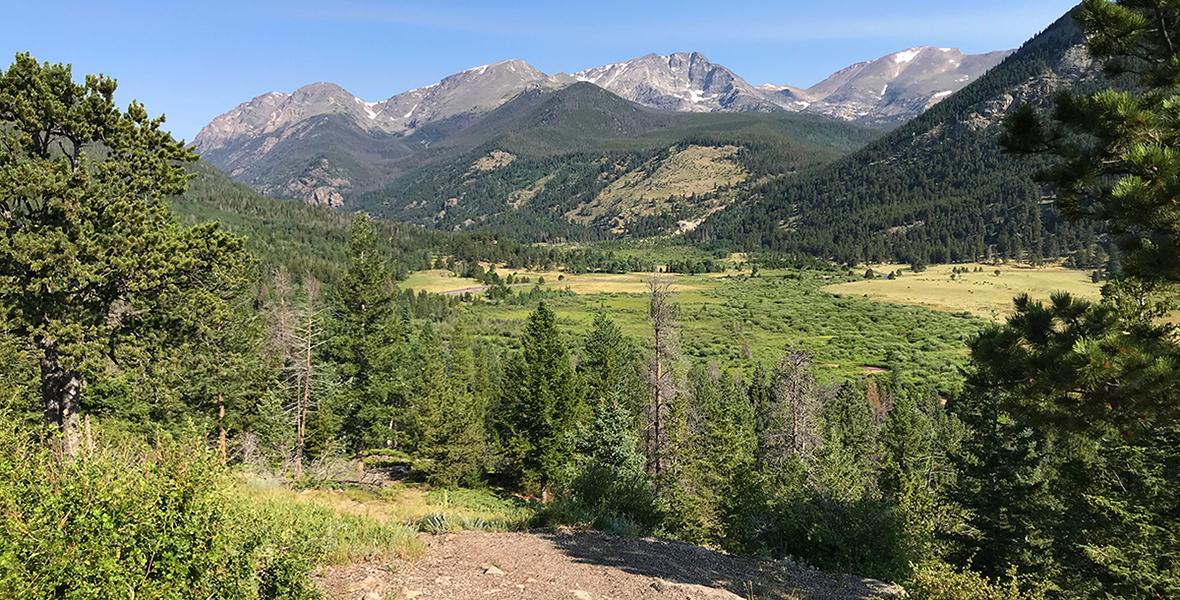
With majestic scenic overlooks, stunning vista points alongside roadside pullouts, and amazing hiking trails, driving Trail Ridge Road is one of the most popular things to do in Rocky Mountain National Park.
But that’s not all there is to do…
One of the most beautiful valleys in the national park is the broad meadow known as Horseshoe Park on the eastern side, where you can find Sheep Lakes
Horseshoe Park Overlook is a paved roadside pullout with informational displays on US Highway 34 near Deer Ridge Junction.
On the edge of this pullout, there is a giant rock outcropping you can walk on for incredible views of Fall River Canyon, Alluvial Fan, Sheep Lakes and the meandering Fall River in Horseshoe Park, snow-capped mountains, and Trail Ridge Road.
From left to right, the mountains you can see from this scenic overlook are:
- Mount Chapin: 12,454 feet
- Mount Chiquita: 13,069 feet
- Ypsilon Mountain: 13,514 feet
- Fairchild Mountain: 13,502 feet
- Bighorn Mountain: 11,463 feet

About Horseshoe Park
Horseshoe Park is a flat U-shaped valley sitting at 8,524 feet elevation, within in the montane ecosystem of forests and grasslands in Rocky Mountain National Park between the towns of Estes Park and Grand Lake, Colorado.
The valley was formed about 15,000 years ago over hundreds of years by the movement of a 500 foot thick glacier.
The glacier carried rock debris through the valley and as it melted, it dropped the debris and rubble along its flanks, forming lateral moraines. The sediment left behind became the meadows of Horseshoe Park and deep depressions from ice chunks that split from the glacier formed two ponds at Sheep Lakes.
As one of the best viewing spots for bighorn sheep in Rocky Mountain National Park, Sheep Lakes is a main draw for tourists.
In the early 1900s, William H. Ashton built the Horseshoe Inn that could accommodate up to 115 guests and a lodge at Lawn Lake. The inn was purchased by the National Park Service in 1931, and all buildings were removed to restore the land to its natural state. In 1932, the area was officially name Horseshoe Park.
From 1933 to 1942, the Civilian Conservation Corps operated a camp in Horseshoe Park while the workers built trails, overlooks, and campgrounds.

Know Before You Go
- Horseshoe Park Overlook at Rocky Mountain National Park is a paved roadside pullout and scenic vista on US Highway 34 about 75 yards before Deer Ridge Junction in Estes Park, Colorado 80517, Larimer County.
- The scenic overlook offers views of Fall River meandering in lazy curves through Horseshoe Park, a U-shaped valley sitting at 8,524 feet in elevation.
- The Sheep Lakes Information Station at Sheep Lakes in Horseshoe Park is open daily in the spring and early summer from 9:00 am to 4:30 pm. It is closed in the fall and winter.
- Other scenic overlooks in Rocky Mountain National Park include: Farview Curve Overlook, Milner Pass and the Continental Divide, Medicine Bow Curve, Alpine Visitor Center overlooking Fall River Canyon, Gore Range Overlook, Lava Cliffs Overlook, Rock Cut Overlook, Forest Canyon Overlook, Rainbow Curve Overlook, and Many Parks Curve.